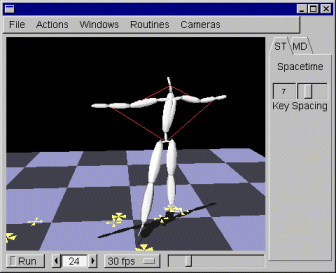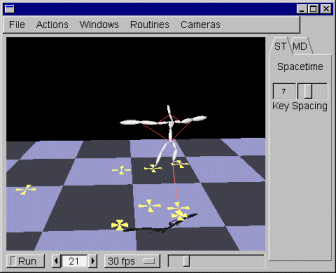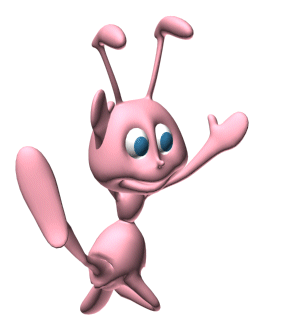|
|
|

|
Before having the solver
retarget the motion, a few things must first be set
up to ensure better results. First,
a we run a Python script that allows the footplant
constraints to slide on all axis except Y (the
vertical axis). This allows the solver to move the
footplants so the new model can reach them. Without
this step the solver will be forced to keep the
footstep in place and make the new model stretch to
reach them. Since we generally retargetted to
smaller model this step was very important to keep
the motions looking natural.
|
|

|
The final step is to add
secondary constraints to clean up the motion. In
the picture to the right the red lines on the
model's arms signify constraints that keep two
joints a certain distance apart during a specified
time. This process is detailed below.
|
|
|
Once the motion is
solved and looks believable, we then go
back and clean up the secondary effects by
adding special constraints where needed.
For example, since the ant model we used
has a larger head than a human, the arm
were penetrating the head during some
frames of our dancing animation. To fix
this problem we simple added another
contraint that forced the upper arm joints
to stay a fixed distace away from the head
for the whole animation. Below are two
shots from the same frame of animation.
The picture on the right is from the
animation before the extra constraint was
added and the one on the left is from
after.
|
 
|
|



